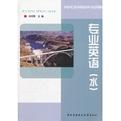专业英语
出版时间:2011-11 出版社:中央广播电视大学出版社 作者:吴树敬 编 页数:131
内容概要
《水利水电工程专业(专科起点本科):专业英语(水)(含考核册、含1张光盘)》以培养学生的专业英语阅读能力为主要目标,同时兼顾基本的翻译和写作能力,强调“实用为主、够用为度”,强调知识性、趣味性、专业性相结合。在教学过程中坚持“以学生为主体、以教师为主导”,用地道、浅显的英语介绍水利水电方面的专业知识,使学生在自己所熟悉的专业背景下,了解水利水电类英语文章的写作风格、句型特点、典型语法和词汇。在学生阅读的基础上,由教师讲解英语学习策略、总结英语阅读技巧、归纳科技英语翻译技巧和简单的实用英语写作。栏目和活动任务的设计有助于学生自学和自我建构知识框架。
书籍目录
Unit 1 Water Resources
Text A The Chang Jiang
Text B Water Resources
Unit 2 Hydrology
Text A The Hydrology of China's Rivers
Text B Hydrology
Unit 3 Water Environment
Text A Cyanobacteria in Lake Tai
Text B Water Pollution
Unit 4 Hydraulic Engineering Facilities
Text A The Three Gorges Dam
Text B Itaipu
Unit 5 Hydraulic Turbine
Text A Hydropower Stations in China
Text B How Hydropower Plants Work
Unit 6 Water and Soil Conservation
Text A Key Environmental Issues of the Loess Plateau
Text B The Role of Project Interventions in SWC
Unit 7 Irrigation and Drainage
Text A Irrigation and Drainage in China
Text B The Irrigation Projects in North America
Unit 8 Hydraulic Engineering Construction
Text A Hydraulic Engineering Construction in China
Text B How Dams Are Built
附录1 参考译文
Unit 1 水资源
Text A 长江
Unit 2 水文学
Text A 中国河流的水文学
Unit 3 水环境
Text A 太湖水华
Unit 4 水利工程
Text A 三峡大坝
Unit 5 水电站
Text A 中国的水电站
Unit 6 水土保持
Text A 黄土高原的主要环境问题
Unit 7 灌溉与排水
Text A 中国的灌溉与排水
Unit 8 水利工程建设
Text A 中国的水利工程建设
附录2 工具、仪器、常用设备名称一览表
附录3 缩略语
附录4 国际工程中常用的机构团体名称
附录5 常用电力计量单位
附录6 水利水电科技英语词汇中常见的词根
参考文献
章节摘录
版权页: Text B Water Pollution Water pollution is a major problem in the global context. It has been suggested that it is the leading worldwide cause of deaths and diseases, and that it accounts for the deaths of more than 14,000 people daily. An estimated 700 million Indians have no access to a proper toilet, and 1,000 Indian children die of diarrheal sickness every day. Some 90% of China's cities suffer from some degree of water pollution, and nearly 500 million people lack access to safe drinking water. In addition to the acute problems of water pollution in developing countries, industrialized countries continue to struggle with pollution problems as well. In the most recent national report on water quality in the United States, 45 percent of assessed stream miles, 47 percent of assessed lake acres,and 32 percent of assessed bay and estuarine square miles were classified as polluted. Water is typically referred to as polluted when it is impaired by anthropogenic contaminants and either does not support a human use, like serving as drinking water, and/or undergoes a marked shift in its ability to support its constituent biotic communities, such as fish. Natural phenomena such as volcanoes, algae blooms.storms, and earthquakes also cause major changes in water quality and the ecological status of water. Surface water and ground water have often been studied and managed as separate resources,although they are interrelate. Sources of surface water pollution are generally grouped into two categories based on their origin. Point source pollution Point source pollution refers to contaminants that enter a waterway through a discrete conveyance,such as a pipe or ditch. Examples of sources in this category include discharges from a sewage treatment plant, a factory, or a city storm drain.
编辑推荐
《水利水电工程(专科起点本科)专业系列教材:专业英语(水)(套装共2册)》有文字主教材、录像教材、网上流媒体资源。在对课程一体化设计的过程中,教学设计专家和媒体专家针对资源的有效性反复论证,利用媒体丰富的表现力和各种现代化的教学形式、教学手段,调动学生的学习兴趣,启发学生思考问题,指导学生选择适合的学习方法,拓展学生的视野,培养学生的自学水平和应用能力等。
图书封面
评论、评分、阅读与下载
